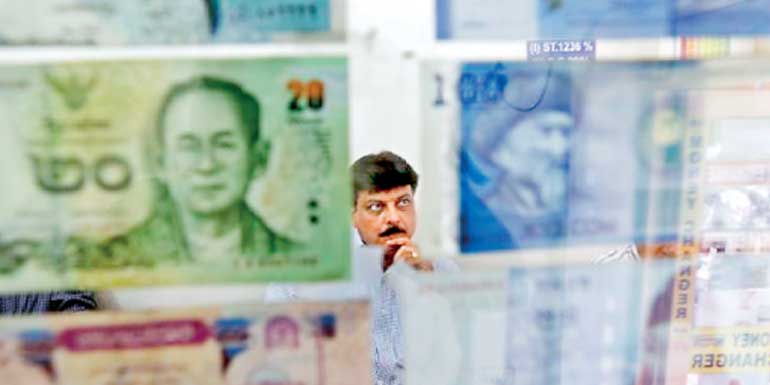Friday Dec 19, 2025
Friday Dec 19, 2025
Tuesday, 16 June 2015 00:19 - - {{hitsCtrl.values.hits}}
Singapore (Reuters): From South Korea to Indonesia and India, monetary authorities are preparing to let their currencies weaken as a falling Japanese yen makes their economies uncompetitive, and drags them into what some policymakers are calling a “currency war”.
The Indonesian rupiah, Malaysian ringgit, Thai baht and other currencies had been sliding gradually against a broadly strong US dollar this year.
They hit fresh lows this week, their sudden declines coming after the yen dropped to a 13-year low on Friday. The region’s normally interventionist authorities, however, kept their feet off the brakes.

An adviser to India’s finance minister said the country’s export growth was flailing not just because of weak global demand but also as a result of the currency-weakening monetary stimulus policies pursued in major economies such as Japan and the euro zone.
“Call it competitive devaluation, currency war or something else, the fact is such policies are having and will have implications for trading partners,” the adviser said. “We cannot afford to let our currency become less competitive.”
India’s rupee INR=IN has been an outperformer as most other currencies ceded ground to a dollar that has been pushed up by expectations that US interest rates will rise at some point this year.
Indonesia’s rupiah (IDR=> is down nearly 8% against the dollar so far in 2015, eclipsing a 7% decline in Malaysia’s ringgit MYR=.
While the yen has lost 16% in 9 months and the euro has fallen 18% since early May 2014, Asian currencies have depreciated far less, making their exports less cheap in international markets.
Theoretically Asian currencies ought to be weaker as, in general, inflation levels in the region are higher than those of major trading partners, most of which are dicing with deflation.
Yet, data from the Bank for International Settlements (BIS) shows China’s yuan was 30% higher in April in trade and inflation-adjusted terms than in 2010. Korea’s won was 15% more expensive than in 2010, while the yen was 28% weaker.
Korea’s exports have fallen every month this year while Chinese exporters have seen both their sales and profits fall.
“There is a risk of currency war where the dollar tends to strengthen, so other countries will be affected,” Indonesian central bank Governor Agus Martowardojo told reporters on Monday.
Not as brutal as 1997
There are parallels with 1997 when an extremely weak yen, highly uncompetitive exchange rates and current account deficits culminated in the Asian currency crisis.
“I don’t think it is going to get as brutal as that,” said Gaurav Saroliya, a macro strategist at London-based Lombard Street Research, listing crucial differences.
Inflation is less of a problem than it was then, making it easier for Asia to cope with weaker currencies. Asian central banks possess far bigger currency reserves. Moreover, the regions’ markets are more flexible and foreign investment flows are less volatile than they were in 1997.
Without going anywhere near as far as the massive quantitative easing policies employed in Japan and Europe, authorities in Asia have been subtly nudging their currencies lower.
India’s Central Bank effectively capped the rupee by mopping up investment inflows and building currency reserves.
Thailand eased controls on domestic investors moving cash abroad, while Indonesia loosened its tight grip on rupiah trading.
South Korea is particularly sensitive to the yen’s faster depreciation as its exporters compete with Japanese firms in the same markets for cars and electronic goods.
Officials in Seoul told Reuters, however, that they lack the tools to push the won KRW= down to the same extent as the yen.
Whereas Asian currencies have undergone a creeping depreciation since 2014, the yen’s fall last week could prove to be a trigger for Asia’s currencies to weaken further.
“A lot of these countries are facing a double whammy of poor exports because of a very uncompetitive exchange rate, thanks to Japan and years of portfolio inflows during the QE environment, and also poor household demand,” said Saroliya.
“It is overall a major headwind. So they will be forced into choosing a weaker exchange rate through monetary easing or non standard measures.”